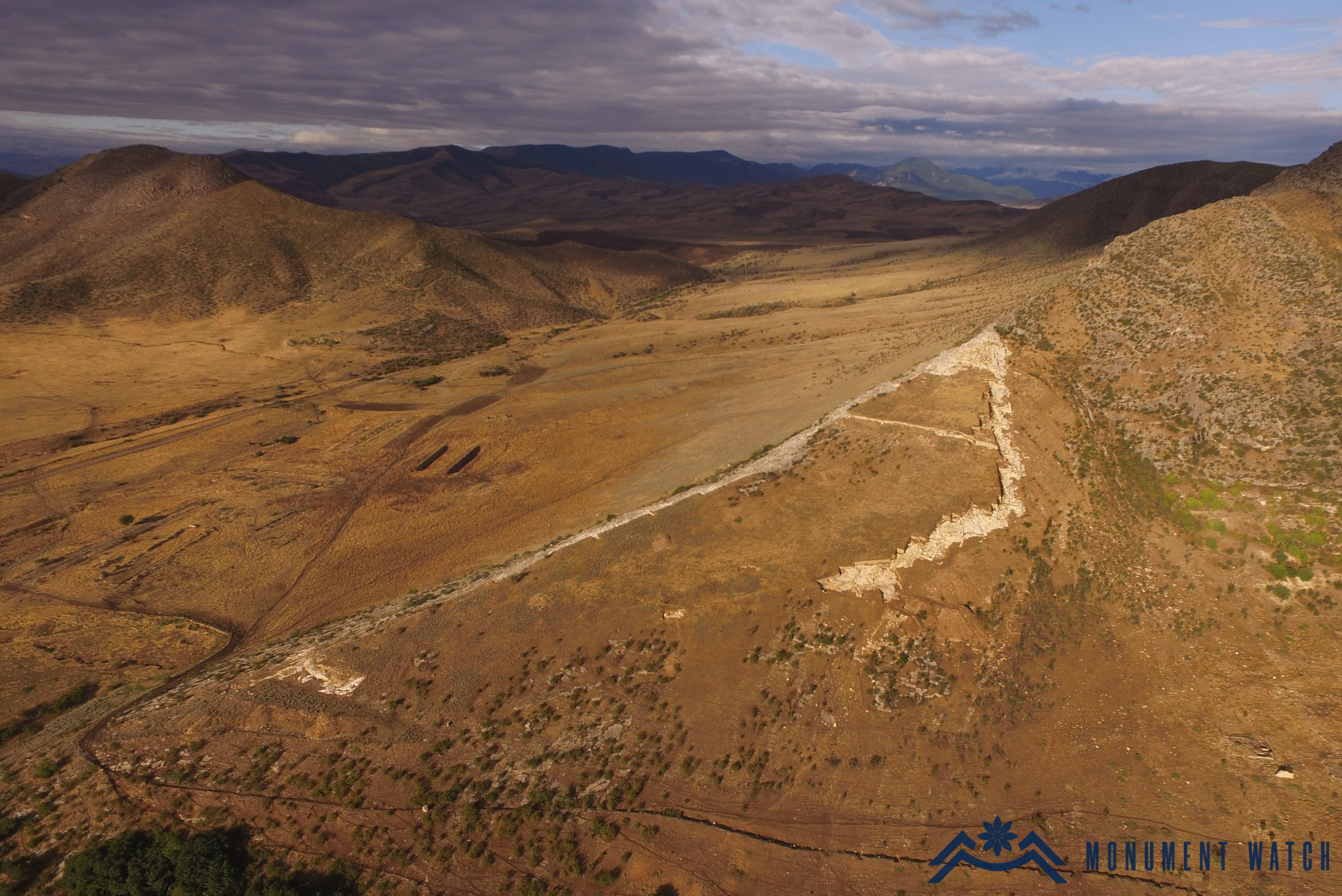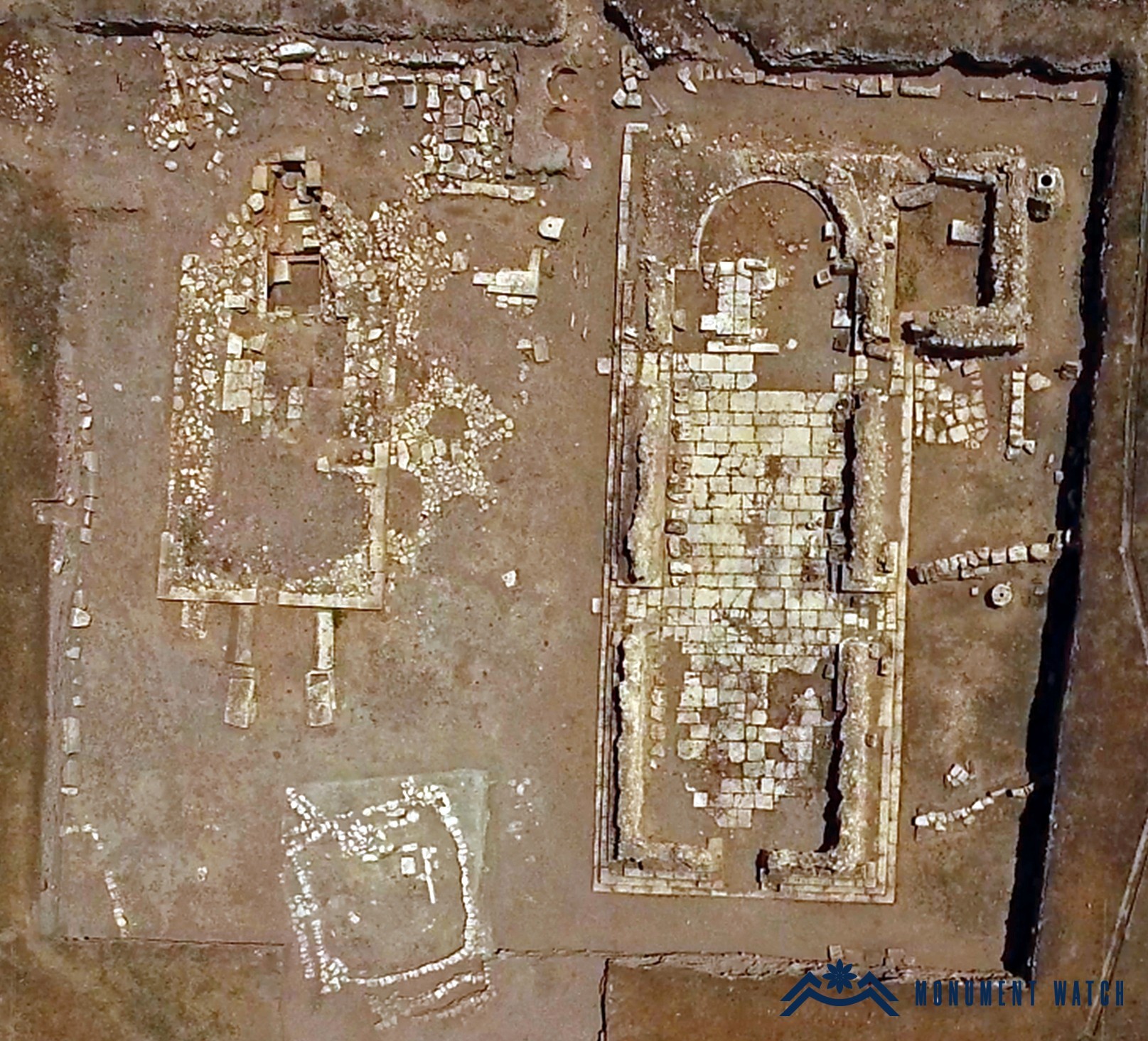Yet another example of Azerbaijani agitprop’s ignorance regarding Tigranakert
The Azerbaijani side has once again targeted the historical site of Tigranakert in Artsakh and its surrounding archaeological monuments. A special program dedicated to the monument was broadcast on CBC TV Azerbaijan, hosted by Rizvan Huseynov, a representative of the Azerbaijani propaganda apparatus (https://www.youtube.com/watch?v=JasrYqTwhOA).
It should be noted that since 2020, Huseynov has repeatedly targeted the monument by organizing on-site recordings and providing commentary. More detailed coverage was provided in December 2020 (https://www.youtube.com/watch?v=3ujCWAUK0B8) and in August 2022 (see: Again, and again: Tigranakert and the Tigranakert expedition under the blow of Azerbaijani propaganda, https://monumentwatch.org/en/alerts/again-and-again-tigranakert-and-the-tigranakert-expedition-under-the-blow-of-azerbaijani-propaganda/) .
The Azerbaijani side has also extensively targeted the Tigranakert historical site and its monuments through other sources (Tigranakert of Artsakh does exist regardless of what Azerbaijani propaganda says about it, https://monumentwatch.org/en/alerts/tigranakert-of-artsakh-does-exist-regardless-of-what-azerbaijani-propaganda-says-about-it/, This time, Azerbaijani propaganda is engaging in the discourse regarding Tigranakert, https://monumentwatch.org/en/alerts/this-time-azerbaijani-propaganda-is-engaging-in-discourse-regarding-tigranakert/).
First and foremost, extensive commentary on Artsakh's Tigranakert is produced solely by Azerbaijani journalists and state propaganda representatives. Although Azerbaijani heritage experts have been conducting tours of the historical site for two years, they have yet to offer any comprehensive commentary or analysis regarding the monument—whether in the form of scholarly articles, reports, or interviews.
In this new video concerning Tigranakert, Rizvan Huseynov provides extensive commentary on the Gyavurkala historical site, which is presented as the historic Albanian settlement once home to pagan and Christian temples. Consequently, it remains unclear what scholarly research or source Huseynov bases his assertion that Gyavurkala is Albanian and that pagan temples existed there. Moreover, despite explaining the term, Huseynov does not explain why the historical site is called Gyavurkala. Perhaps most notably, the video cites Azerbaijani heritage expert R. Vahidov, who unequivocally concurred with Stepan Eremyan's testimony that Tigranakert not only existed but was also located within the territory of Shahbulaq during the so-called Gyavurkala years (Tigranakert in written sources, https://tigranakert.org/en/the-city/tigranakert-in-written-sources/).
Moreover, while filming in Gyavurkala, Huseynov failed to notice the damage inflicted by his side in recent years on the historical site and its use for military purposes (Azerbaijan dug bunkers at the early medieval necropolis of the settlement of Gyavurkala, https://monumentwatch.org/en/alerts/azerbaijan-dug-bunkers-at-the-early-medieval-necropolis-of-the-settlement-of-gyavurkala/).
The broadcast is in Russian, so we assume that Huseynov can also read Russian. Rather than exposing falsehoods, it would be preferable to consult the extensive Russian-language articles on Tigranakert available on the dedicated website (https://tigranakert.org/ru). This would provide an opportunity to understand that the antique of Tigranakert — namely, the fortress built by Tigranes and the medieval marketplace — are located in different parts of the city, in the vicinity of churches, and belong to distinct periods: the former was constructed in the early Middle Ages ( Figs. 1 and 2), and the latter in the 5th–6th centuries (Fig. 3).
U0pon carefully viewing the video, it becomes evident that the Azerbaijani side, despite considering Armenian researchers to be fraudulent, does not hesitate to use the inscriptions and markings produced by the Artsakh marching group (for example, without observing copyright protection), effectively stealing them from the Artsakh monuments' continuous monitoring website (Tigranakert in written sources,https://tigranakert.org/en/the-city/tigranakert-in-written-sources/).
Within the program's framework dedicated to Tigranakert, Huseynov also delivers extensive commentary on Caucasian Albania. In this segment, he analyzes the stone pediment found among Tigranakert's large basilica inscriptions. Of course, the analysis is conducted according to Huseynov's methodology, which ultimately concludes that the Armenian alphabet is an ecclesiastical script used in the Near East, formed based on the Assyrian and Coptic alphabets. Refuting this absurdity is already pointless; we present only the information about the stone pediment found among the inscriptions (The disc with Armenian inscriptions,https://tigranakert.org/en/the-findings/disc-with-armenian-inscriptions/).
Huseynov claims that the Tigranakert marching group in Artsakh lost interest in the monument when they realized that the architectural details uncovered during the excavations were linked to the medieval rather than the antique period. As a result, they gradually stopped the excavations. Notably, beneath the guise of deceit, the Azerbaijani side failed to observe that extensive excavations were carried out until, including, 2020.
We advise Azerbaijani agitprop to seek a propagandist with more terrific cultural refinement. Frankly, we are tired of responding to these semi-literate utterances.


